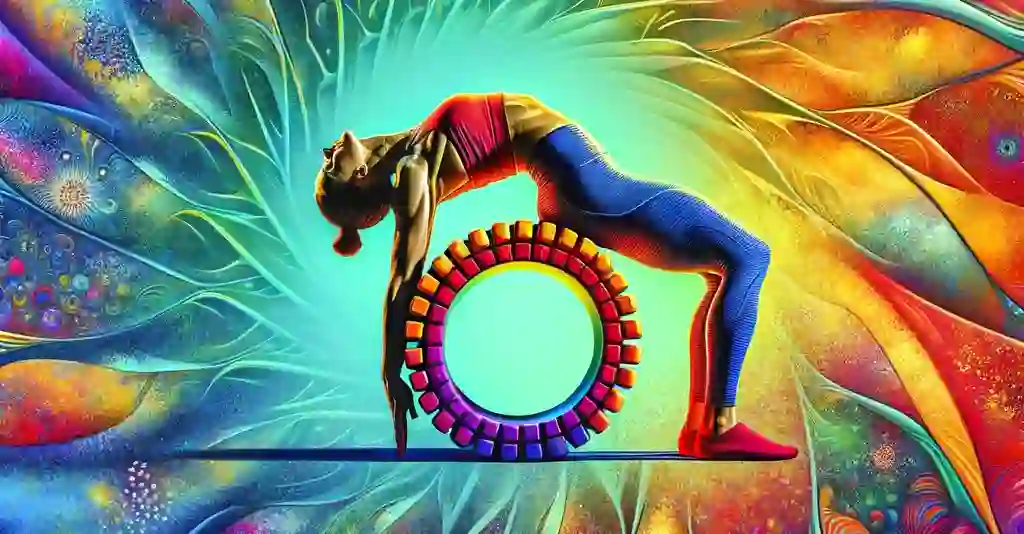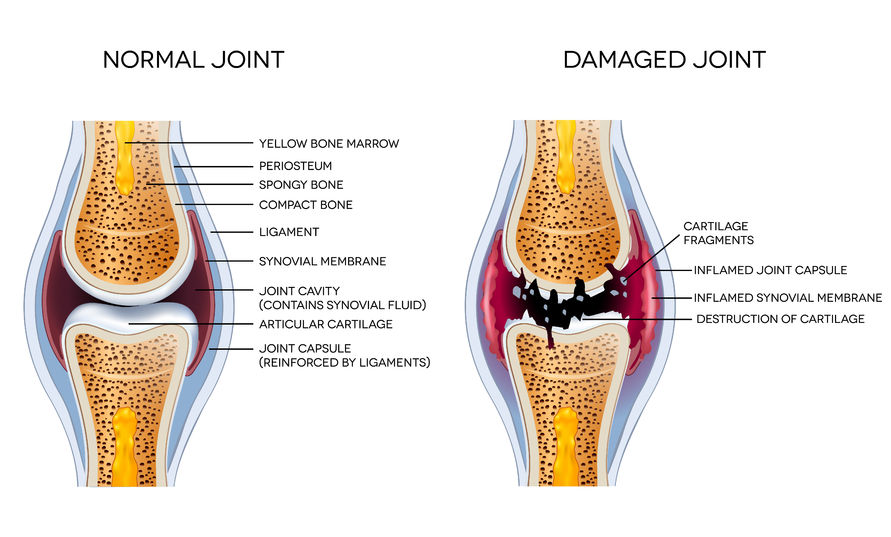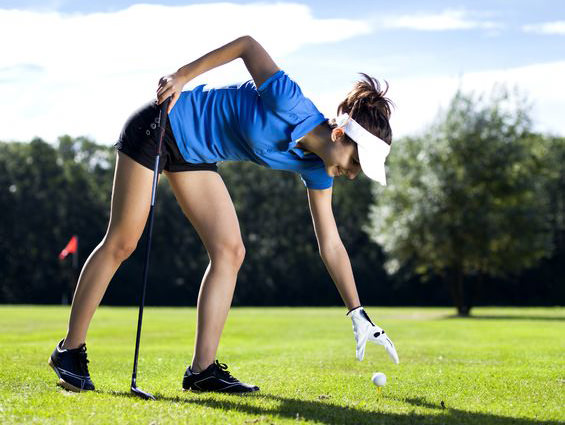Sciatica Exercises: The 4 Best Exercises
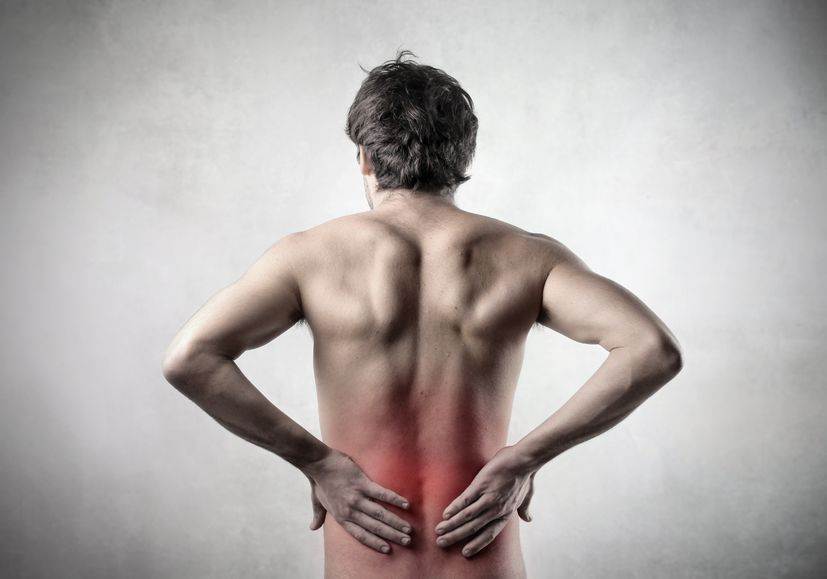
Discover the Best Sciatica Exercises for Pain Relief and Recovery
Persistent sciatica pain can transform daily activities into daunting tasks, leaving you searching for relief. If you’re on the hunt for effective strategies to alleviate sciatica and bolster your rehabilitation, welcome to your comprehensive guide. Here, we delve into not only the treatment options but also spotlight sciatica exercises that are crucial for pain relief and recovery. These exercises, when integrated with the professional care from your chiropractor or physiotherapist, are designed to reduce sciatica symptoms significantly.
Why Focus on Sciatica Exercises?
Exercises specifically tailored for sciatica play a pivotal role in managing and reducing pain. They are essential for strengthening the muscles supporting your spine, improving flexibility, and promoting healthy circulation to the affected nerve regions. This guide is your go-to resource for understanding how targeted exercises can complement medical treatments and accelerate your journey to relief and rehabilitation.
Understanding Sciatica: Sciatica Exercises
Sciatica is often described as a painful sensation that originates in the lower back or buttock, extending down through the thigh and leg, and occasionally reaching the foot. This discomfort results from the compression or irritation of the sciatic nerve. However, the root cause of this pinching can vary, necessitating precise diagnosis and tailored treatment plans.
The Complexity of Sciatica Causes: Sciatica Exercises
Identifying the exact source of sciatica is crucial, as nerve compression can occur at multiple points along its path. Misdiagnosis or oversimplification of your condition as merely “sciatica” without further investigation can lead to ineffective treatment strategies. It’s essential to understand whether the pain stems from issues like disc herniation, degenerative disc disease, or another underlying cause to ensure the appropriate therapeutic approach is employed.
See Also: Best Toronto Chiropractor: How To Find The Best Chiropractor In Your City
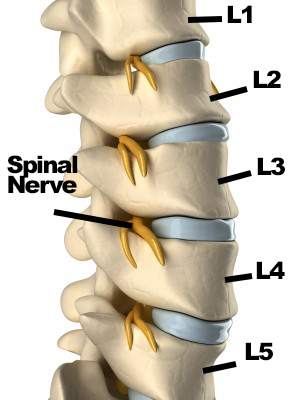
L4 and L5: Sciatica Exercises
So how do I know where my pinched nerve is? Two nerves come out between the last two vertebrae in your body. Your nerve is very commonly pinched here.
Your lower back vertebrae are called lumbar vertebrae. There are 5 vertebrae in the lower back. Taking the “L” for the lumbar spine, they are named L1, L2, L3, L4, and L5. The last two vertebrae in your lower back are L4 and L5.
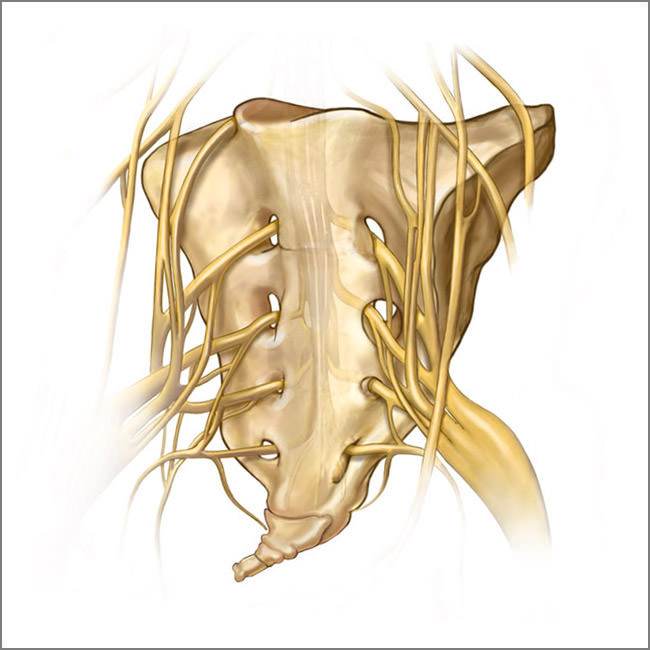
Ion medical designs http://www.ionmedicaldesigns.com/ion_site/two_dimensional_artwork.html
Just below L5 is one of your pelvic bones. It’s called the sacrum. The sacrum has holes with yellow-coloured nerves coming out.
S1, S2, S3: Sciatica Exercises
The nerves are called S1, S2 and S3. “S” is for sacrum. These nerves are rarely pinched.
Your sciatic nerve is formed when the nerves from L4 L5 and L5 S1 join together with the S1, S2 and S3 nerves in your buttock.
So, most of you will have your nerve pinched in one of three spots.
- In the buttock the Sciatic Nerve starts, in other words where the S1, S2, and S3 nerves join the two other nerves that come out between L4, L5 and L5 S1.
- Between L4 and L5 vertebrae
- Between L5 and S1 vertebrae
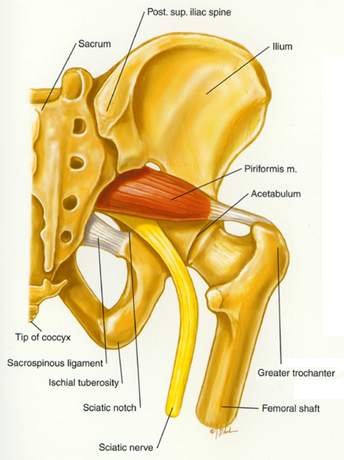
Now you know where the nerve can be pinched but it doesn’t answer why one of the nerves is pinched causing your sciatica
The Usual Suspects (Causes) of Sciatica
Most people’s sciatica is from:
- Herniated Disc at L45 or Herniated Disc at L5S1 (some osteoarthritis = “wear and tear” is involved)
- Degenerative Disc Disease (Osteoarthritis of the Disc=”Wear and Tear” of the Disc)
- Stenosis (Basically advanced osteoarthritis)
- Spondylolisthesis (A fracture of the vertebra or Osteoarthritis with the vertebra moving forward)
- Piriformis Syndrome
These are the diagnoses that your doctor or chiropractor should be telling you about not sciatica.
Remember sciatica only says that you have a pinched sciatic nerve causing pain in your buttock and leg, sciatica doesn’t tell you the cause of your pain. Without determining the cause you will get hit-or-miss treatments from your chiropractor or physiotherapist as they can’t give you specific treatment.
See Also: MRI CT scans X-rays, What’s Best For My Pain
The key exam that you need to determine what the heck is causing your pain is a neurological examination. You have probably seen it on TV before.
- Reflex tests with a reflex hammer on your knee and the back of your ankle
- Muscle Strength Testing: Resisted muscle testing of your foot. You try and push up/down while the chiropractor holds your foot. An alternative is heel walking and walking on your toes.
- Light Touch and Sharp Dull Testing: A light touch directly on the unclothed legs and feet to determine if you are unequal in your sensitivity to light touch and sharp/dull testing. A light touch is often enough as a screening.
Also, remember that the diagnosis should pretty much be determined in the office and X-rays, MRI, and CT scans done only if there are signs of something else or the diagnosis is kind of fuzzy.
See Also: Herniated Disc Part 2: The Best Exercises For Your Herniated Disc
Herniated Disc: Sciatica Exercises
You herniate a disc from the everyday habits that you have. The everyday habits of slouching and bending with a rounded low back, build up to weaken and damage the disc to the point it is ready to break open and herniate.
The problem is there is no pain. You don’t feel sciatica until the disc has herniated as there are no nerves inside the disc. So you continue your habits and think you don’t have a bad back until one day you lift your daughter off the floor.
The only problem is you had a bad back with no symptoms for a very long time. This is just like a car with a little bit of rust showing but if you take the car apart you see a lot more rust.
Degenerative Disc Disease – Osteoarthritis of the Disc
Degenerative Disc Disease is a continuation of the breakdown of the disc that was started by bad lifting and slouching habits.
The disc becomes smaller, and brittle like an old elastic band that is decaying, leading to the disc becoming smaller in height. The smaller disc makes the space between the vertebrae smaller. Thus, your nerve doesn’t have much room, so your nerve gets pinched between L4 and L5 or L5 and S1.
Stenosis- Most commonly from continuation of Osteoarthritis
Stenosis is a “narrowing”. There are two types of stenosis
- Lateral Stenosis
- Spinal Stenosis
1. Lateral Stenosis is the narrowing of the hole which the nerves from the spinal cord come from. Does this sound familiar? It’s degenerative disc disease + the bone degenerating forming spurs that narrow the hole for the nerve. A smaller hole for your nerve eventually means a pinched nerve.
2. Spinal Stenosis is the narrowing of the canal where the spinal cord sits. This is essentially pinching of the spinal cord usually in the lower back.
Spondylolisthesis (Vertebebra moving forward)
Spondylolisthesis is usually the moving forward of the vertebra (sometimes backwards). When the vertebra moves forward the spinal cord and nerves are pulled putting tension on your nerve. Nerves under tension get irritated and so turn into sciatica. This can happen from a fracture to the vertebrae or osteoarthritis.
Piriformis Syndrome
Most people’s sciatic nerve usually goes over or under the piriformis muscle. In some cases, possibly yours, the sciatic nerve goes right through the piriformis muscle. When the muscle tightens up it squeezes on the sciatic nerve causing sciatica.
Walking like a “man” is another reason for sciatica. That’s right, when you walk bow-legged with your feet turned can give you trouble later.
Chances are, if you are reading this you already have a problem with sciatica. When you turn your feet out this makes the piriformis muscles work harder.
The harder your piriformis works the more likely the nerve will be pinched causing sciatica.
The 4 Best Exercises For Sciatica
While treatments are different for sciatica depending on the cause you can still help your chiropractor or physiotherapist by doing your home exercises.
1. Flossing: first introduced by Michael Shacklock
Flossing is good for your teeth but a different kind of flossing is good for your spine and spinal hygiene.
First, determine if you can floss safely:
- Sit on a chair or relatively hard surface. Please don’t sit on the couch, it is too soft and will aggravate your lower back.
- Raise your painful leg to the point of pain and keep it there.
- Bend your neck forward till your pain is aggravated from above
- Lower the leg till the pain decreases.
If the pain decreases you are safe to do flossing.
Warning: This exercise can cause acute sciatica but chances are minimized by doing the screening exercise. Don’t floss until you have been out of bed for at least 2 hours. Now The Flossing:
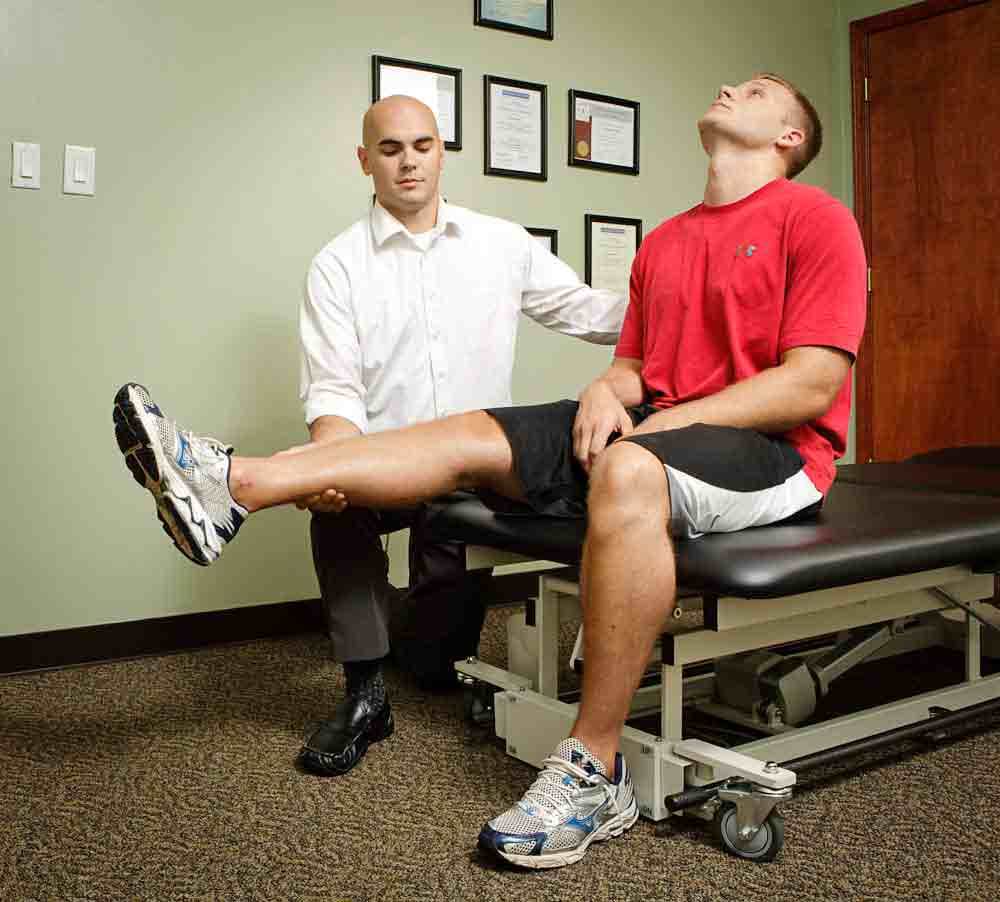
- Sit down in a chair with your legs swinging freely
- Bend your neck forward for 5 seconds (if this doesn’t cause sciatica you can do the next step)
- Bend your neck backwards as far as possible and straighten the knee (5 seconds)
- Repeat 3 sets of 10X on each leg. You can do this for up to 5/day.
2. Piriformis Stretch A) Sitting and B) Lying Face-Up
A: Sitting:
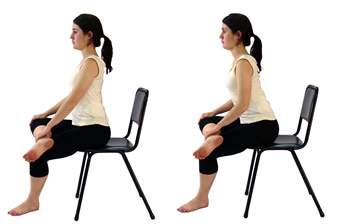
- Sit in a chair and cross the bad leg over the good
- Keep the arch in your back and move your chest forward
- Repeat 3 sets 30 secs. This can be done several times a day
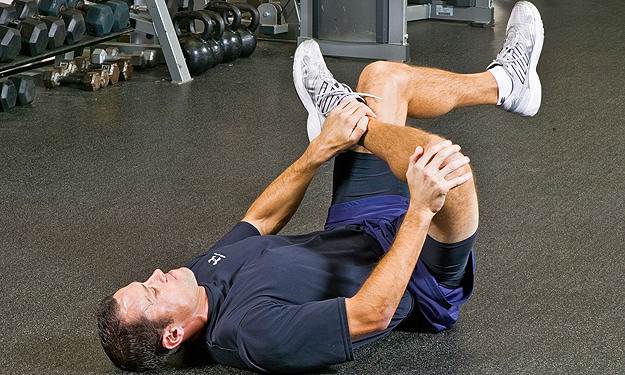
B: Lying Face-up: This exercise might be easier for some of you.
- Lying Face-up both knees bent. Put the bad leg over the good.
- Bring the good leg up to support the bad leg.
- Push the bad leg outward.
3. Ball Exercises: Piriformis, Gluteus Maximus, Gluteus Medius
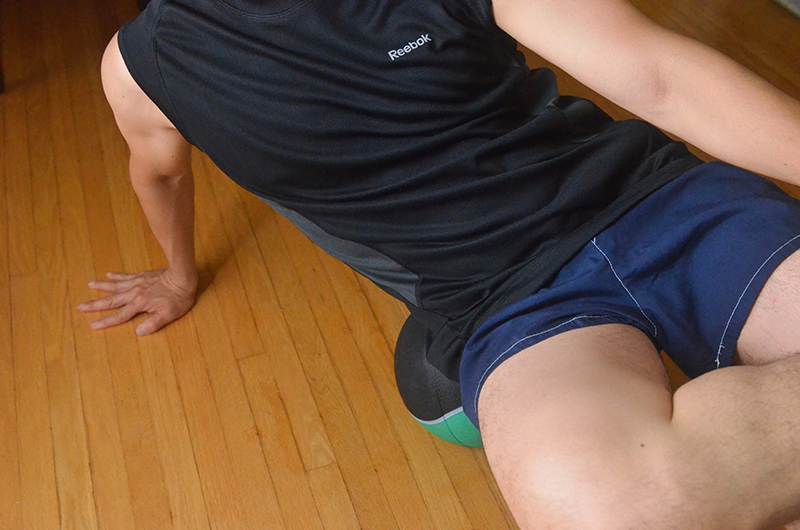
Piriformis
- Cross your bad side leg over the other knee
- Get a tennis ball, basketball or a medicine ball and sit on it with your buttock.
- To treat the piriformis go lean at about a 45-degree angle.
- Stop at each tender point and hold until each one is ironed out or feels less tender.
Gluteus Maximus
- Same as the piriformis except that you don’t need to cross the bad over the good.
Gluteus Medius
- Same as Gluteus Maximus except that you now lean at almost a 90-degree angle -You are almost on your side with a focus on the side area just below the belt or hip bone
4. Cobra
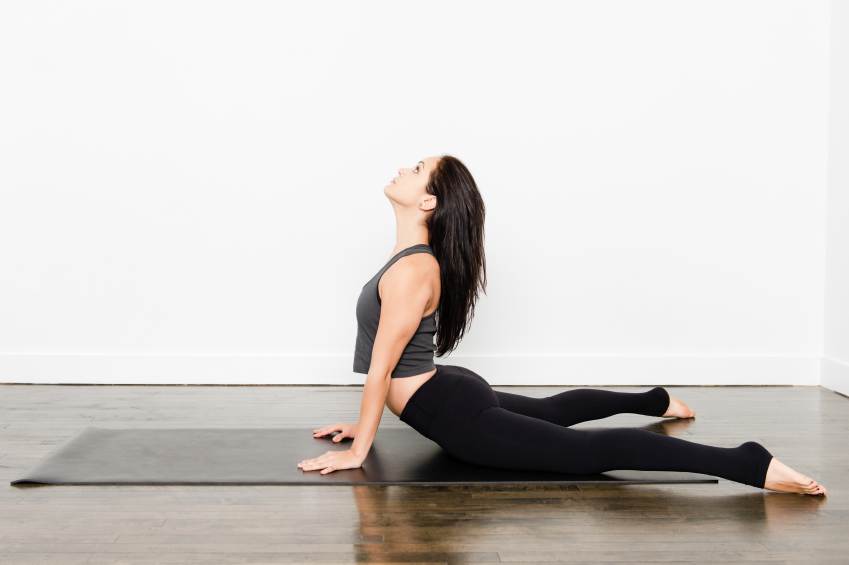
- Lie down face down with your hands underneath your shoulders.
- Push up from as high as you can until your lower back stops you or your elbows are straight.
- The pelvis should still be on the floor and the lower back muscles relaxed.
- Do these exercises hold each time for 1-2 seconds 6-8 times per set? This exercise can be repeated every two hours throughout the day.
If your pain is from a disc herniation you can combine the disc herniations part 2 exercises with these exercises. If your sciatica is from a different cause I will write about all the conditions that cause sciatica over time.
Write in the comments to tell us how you are doing with your sciatica. Also, let us know your vote for the best Toronto Chiropractor below. Connect with me on LinkedIn.



